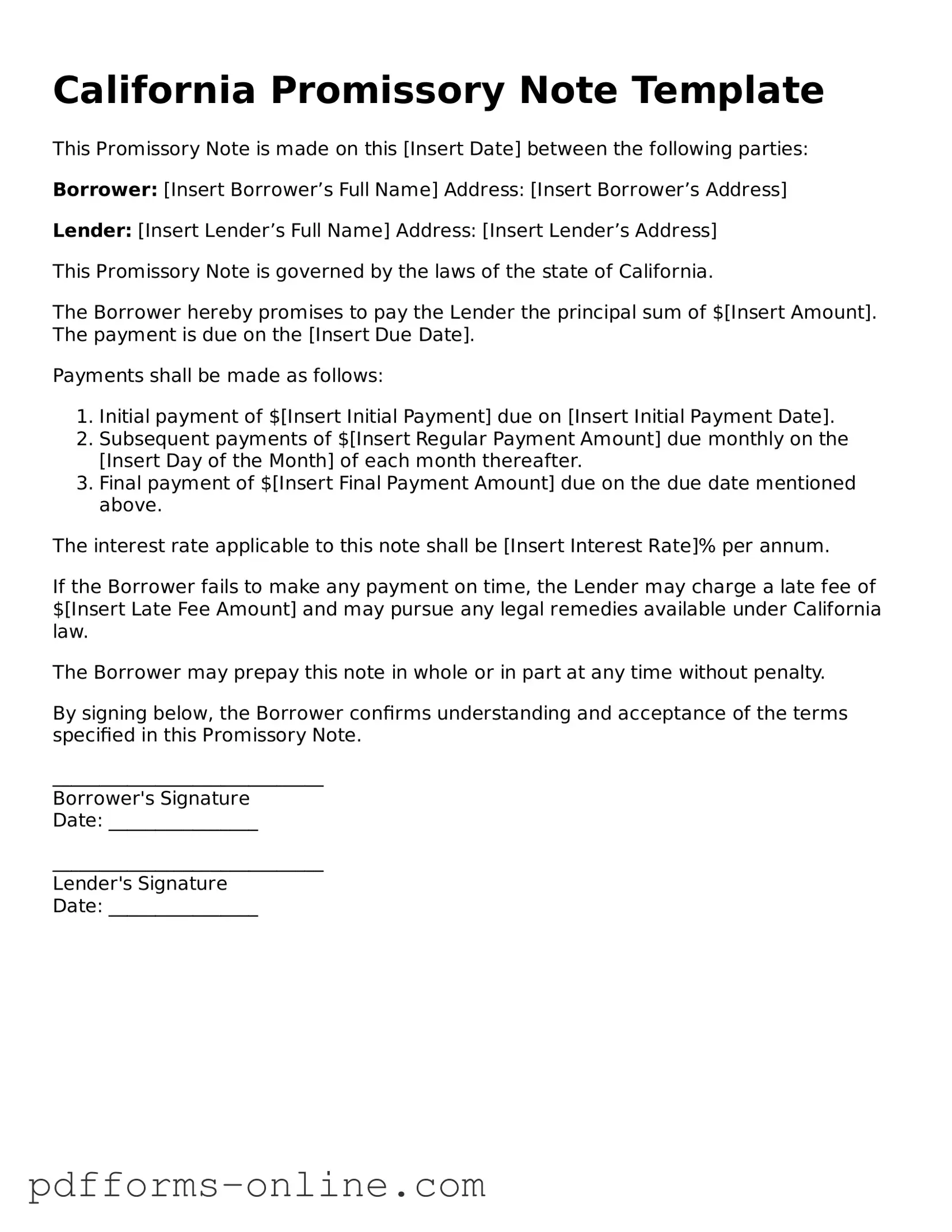California Promissory Note Template
This Promissory Note is made on this [Insert Date] between the following parties:
Borrower: [Insert Borrower’s Full Name]
Address: [Insert Borrower’s Address]
Lender: [Insert Lender’s Full Name]
Address: [Insert Lender’s Address]
This Promissory Note is governed by the laws of the state of California.
The Borrower hereby promises to pay the Lender the principal sum of $[Insert Amount]. The payment is due on the [Insert Due Date].
Payments shall be made as follows:
- Initial payment of $[Insert Initial Payment] due on [Insert Initial Payment Date].
- Subsequent payments of $[Insert Regular Payment Amount] due monthly on the [Insert Day of the Month] of each month thereafter.
- Final payment of $[Insert Final Payment Amount] due on the due date mentioned above.
The interest rate applicable to this note shall be [Insert Interest Rate]% per annum.
If the Borrower fails to make any payment on time, the Lender may charge a late fee of $[Insert Late Fee Amount] and may pursue any legal remedies available under California law.
The Borrower may prepay this note in whole or in part at any time without penalty.
By signing below, the Borrower confirms understanding and acceptance of the terms specified in this Promissory Note.
_____________________________
Borrower's Signature
Date: ________________
_____________________________
Lender's Signature
Date: ________________
